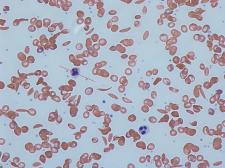Sickle cell disease and a pivotal moment to end health inequality
By Ted W. Love,
STAT
| 07. 15. 2021
Covid-19 laid bare the long-standing vulnerability of minority and low-income communities in U.S. society and its health system even as we celebrated the power of scientific innovation to rein in the pandemic. It’s time to turn that innovation, driven by an even greater mind shift, to end inequality in treatment.
In perhaps no condition is such inequality more evident than sickle cell disease — a genetic disease for which the molecular basis has been known since 1956 but for which innovative treatments have been elusive.
Beginning at birth, this disease deforms and destroys red blood cells. Instead of floating easily through the bloodstream as flattened disks, they contort into a rigid crescent or sickle shape. These sickle cells die off sooner than healthy red blood cells, causing anemia. They can also clump together and block blood vessels, causing pain (known as sickle cell crises or vaso-occlusive crises), organ failure, and early death. People with sickle cell disease die on average 30 years sooner than people without it.
The vast majority of those affected by sickle cell disease in the U.S...
Related Articles
By staff, Japan Times | 12.04.2025
Japan plans to introduce a ban with penalties on implanting a genome-edited fertilized human egg into the womb of a human or another animal amid concerns over "designer babies."
A government expert panel broadly approved a proposal, including the ban...
By David Jensen, The California Stem Cell Report | 12.11.2025
California’s stem cell and gene therapy agency today approved spending $207 million more on training and education, sidestepping the possibility of using the cash to directly support revolutionary research that has been slashed and endangered by the Trump administration.
Directors...
By Tina Stevens, CounterPunch | 12.11.2025
Silicon Valley and other high tech billionaires are investing millions in start-ups dedicated to creating genetically engineered (GE) babies, according to a recent Wall Street Journal (WSJ) report. AI mogul Sam Altman, cryptocurrency entrepreneur Brian Armstrong, venture capitalist Peter...
By Jenny Lange, BioNews | 12.01.2025
A UK toddler with a rare genetic condition was the first person to receive a new gene therapy that appears to halt disease progression.
Oliver, now three years old, has Hunter syndrome, an inherited genetic disorder that leads to physical...




